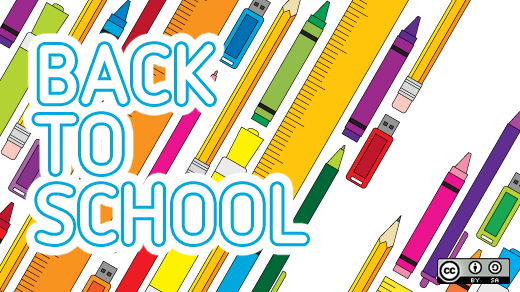About eight years ago, I started lobbying to bring more Linux and open source software to high schools and higher IT vocational institutions in the Netherlands and Belgium. Here's how I did it and what you can learn from it to do the same where you live.
First, Linux and open source in education can be categorized into three topics:
- The infrastructure of schools
- The desktop students and teachers work with
- The curriculum for IT education
The first topic, the infrastructure at schools consists of a bunch of different software, which is used for administration. Examples are applications like student management systems, document management systems, and operating systems. Basically, this software isn’t that different from what is used in other industries. This applies not only to vocational education, but to all schools at any level.
The second topic, the desktops used at schools are predominantly running on Microsoft Windows, and thanks to a push to get iPads into schools, we know they can also educate with the aid of other devices. So, why not a Linux desktop?
Finally, from the list of topics, I focused most of my attention, time and energy, on the curriculum for IT education at intermediate and higher vocational education in the Netherlands.
Up until five years ago, I was like a voice in the desert when I advocated for Linux and open source in curricula. I was often laughed at when predicting Linux would be the most frequently used operating system for servers. Today, no one denies that Linux is a serious competitor in the server world. Just recently, I was part of a commission to bring a new curriculum to a higher vocational school for sysadmins. More than half the people present were convinced Linux and open source are indispensable for the datacenter. And, the hosting admins emphasized Linux and open source are essential for graduates to get a job at their company. For this target group it is very important that software is scalable up and down, both technically and financially. They state that this is only flexible enough with open source software. If they are not flexible and their competitors are they can not survive.
A latest development which will take down a lot of barriers for schools who want to teach Linux, is the availability of free Linux material through the Cisco Academy. Since this schoolyear ten million students worldwide have free access to Linux entry level teaching materials though this method. This concerns teaching material based on the worldwide set of learning goals by LPI Linux Essentials.
This is the next step in the right direction, but we are not there yet. At the moment, there are many teachers in IT, who do not have knowledge or experience with Linux and open source software. So, providing IT teachers proper training and accompanying certification is how we can help further.
Is your school teaching Linux and open source software?
The train has left the station, and it’s not going to stop. It’s up to schools and teachers to make sure they jump aboard. Will you?
Originally published in the Dutch Linux Magazine, Issue 15, July/August 2014.
More resources: What is open education? and Youth using open source (a free eBook).






7 Comments